Bled and Bohinj: A tale of two lakes
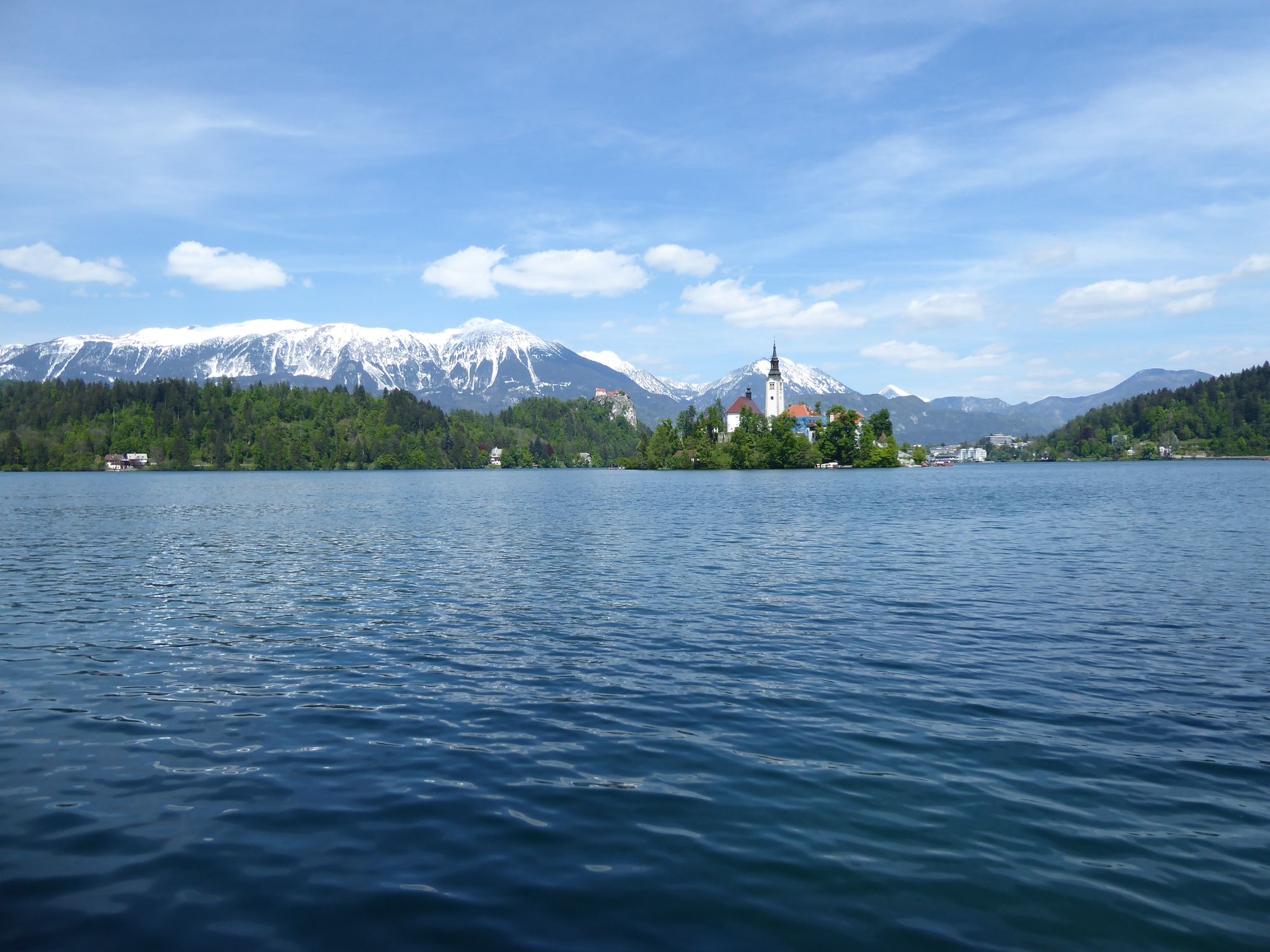
As the car edged further up the track, by now just two deep ruts in the mud, the bleeping parking sensor reached a crescendo, like a heart monitor on a TV hospital drama.
We came to a stop with a sickening clunk, and the engine cut out. For a second the only sound was the birds, the distant chug of a tractor.
"Make a U-turn if possible!" urged the satnav. "Make a U-turn if possible!"
We were somewhere between Lake Bohinj and Lake Bled, in a gloriously green valley carpeted with yellow wildflowers. Not for the first time on our trip, we had found our route ahead blocked by roadworks, the tarmac dug up and fenced off, with no obvious diversion signposted. The satnav suggested rerouting via a country lane too narrow for the car, while Google Maps proposed a shortcut across a farmer's field. It was only our second day in Slovenia, but we were quickly getting used to taking the scenic route.
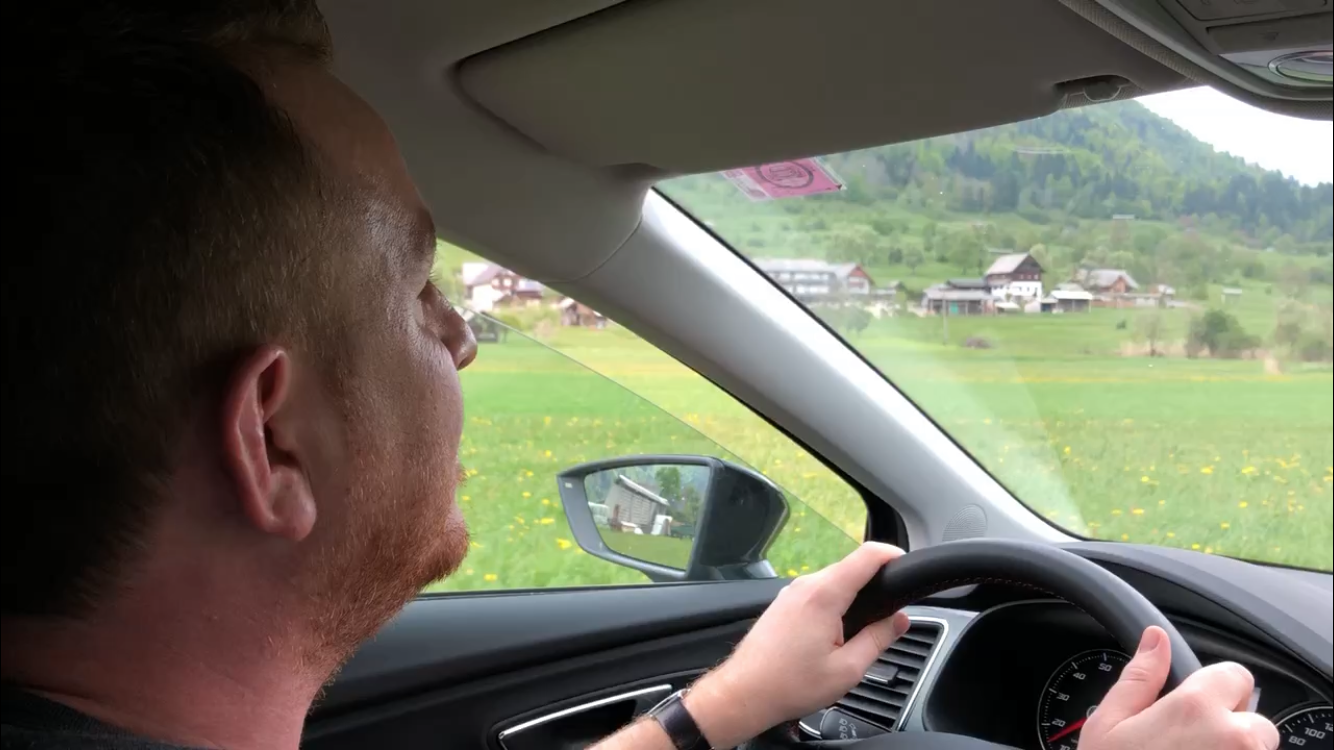
Lake Bled
Lake Bled is a vision from a fairytale, its dazzling blue waters hemmed in by pine trees. The western end of the lake cradles a little island crowned by a gothic church tower, while the north shore rises to a rocky outcrop and Slovenia's oldest castle. We arrived at the beginning of May, just as the cafés and restaurants along the shore were starting to awake from their winter slumber.
The water was an incredible colour in the spring sunshine, rippling in the wake of ducklings trailing their mothers and traditional pletna boats ferrying tourists to and fro. We spent our first day circumnavigating the lake at a relaxed pace, following the shady path that traces the water's edge. The trail is a little under four miles long, and it doesn't take long to complete a full loop.
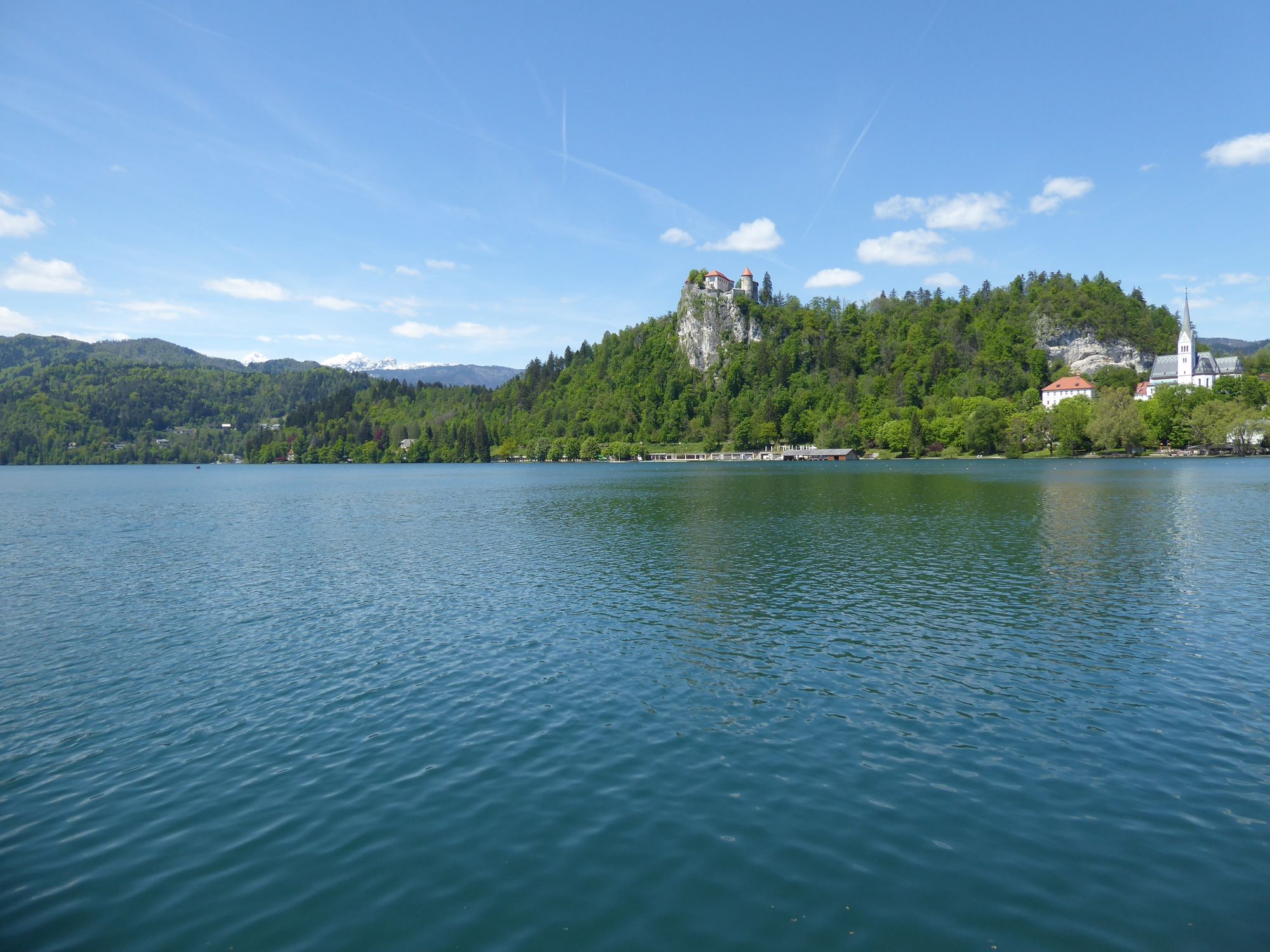
If you want the classic view of Lake Bled that appears in all the photos then you have to gain a bit of altitude, so we headed off the main path and up towards the Mala Osojnica viewpoint. We ascended a steep trail through the forest, narrow and slippery in places. At one point we had to edge along a precarious-looking shelf cut into the hillside while grasping a wire handrail; not long after, a dizzying staircase rose towards the viewpoint.
The views from the top were stunning, with the lake laid out beneath us and the snowy Karavanke mountains crowding the horizon. A flattish plain stretched out to the southeast, following the course of the Sava river towards Ljubljana, and everywhere the landscape was thick with trees. Slovenia is one of the most densely wooded nations in Europe, with around two thirds of the country covered in forest.
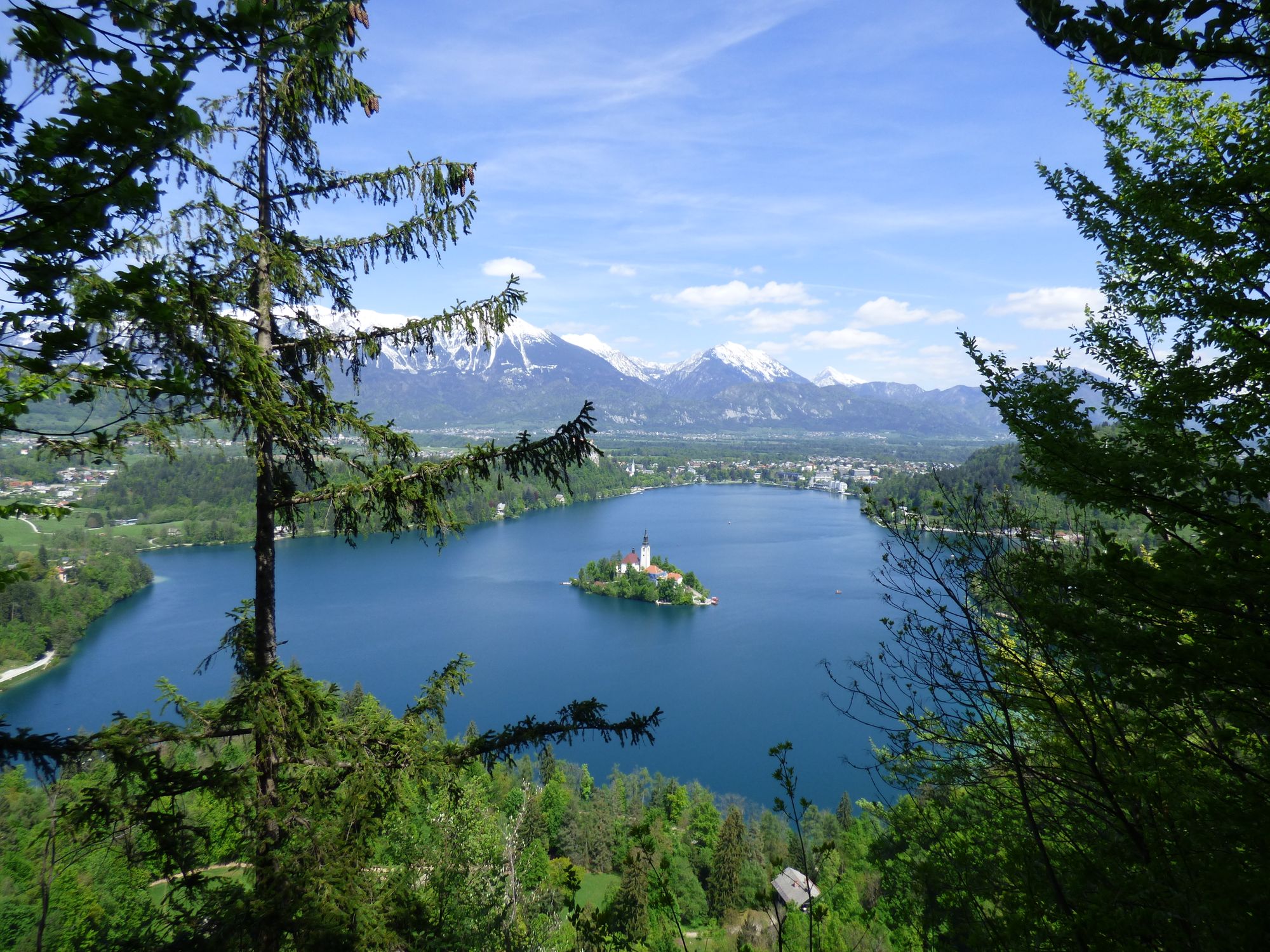
Once we had caught our breath we made our way back down the hill and continued along the lake shore, stopping at a café near the castle for a drink and a chunk of kremšnita, the famous Bled cream cake. This iconic culinary creation is essentially a slab of custard fused with a slab of cream, topped with a crispy pastry layer and dusted with a blizzard of icing sugar. It's one of those desserts that you enjoy while you're eating it, but feel a bit sick afterwards. Luckily we'd picked a lovely sunny spot to sit and watch the world go by while we waited for the sugar rush to subside.
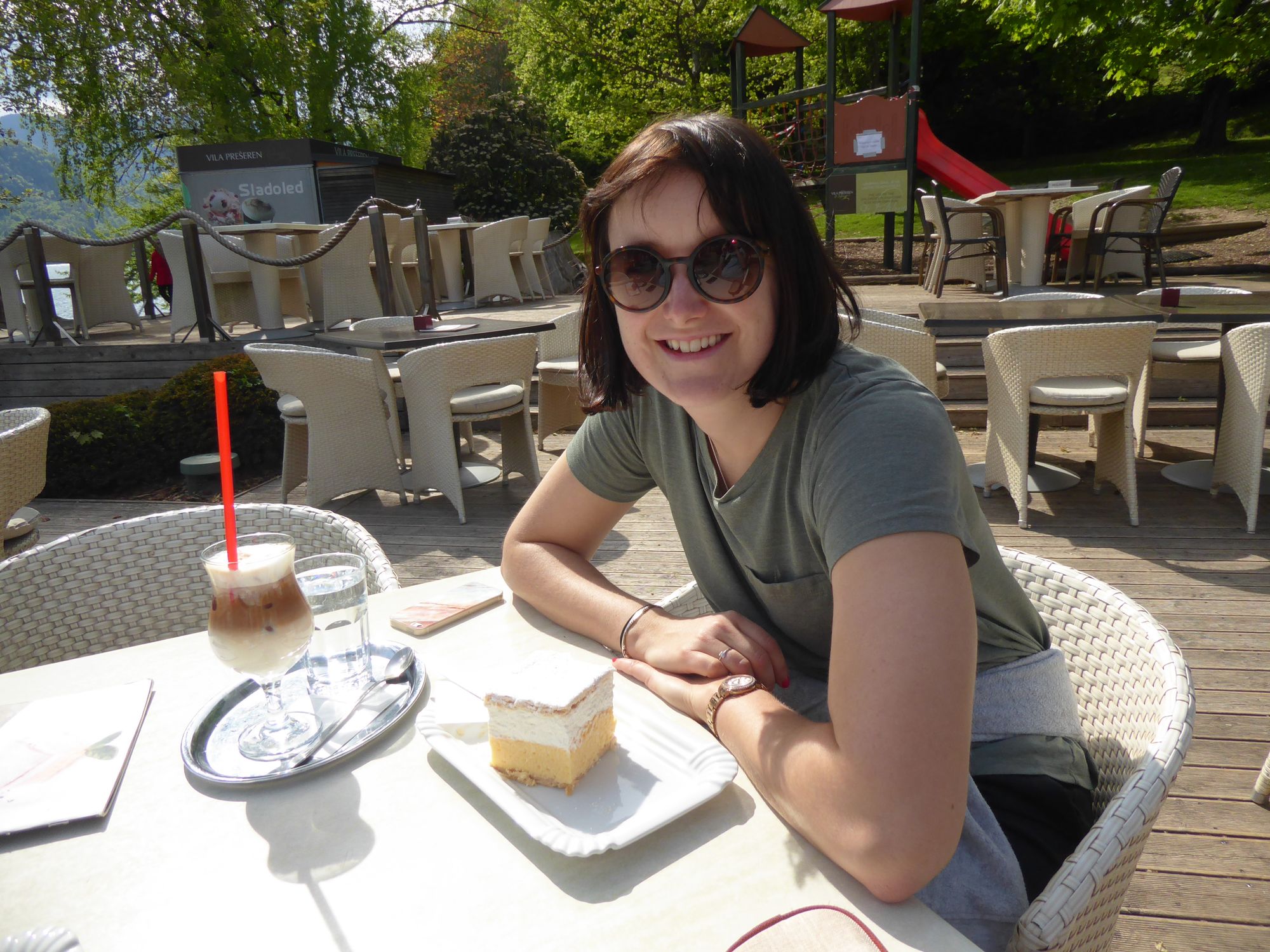
Lake Bohinj
A lot of people will tell you that Lake Bohinj is even more beautiful than Lake Bled, but it didn't quite ring true for me. I do understand why some people prefer Bohinj - it's quieter and less developed, with a dramatic setting - but there was a surreal, almost magical quality to Lake Bled, like a postcard that had come to life. Bohinj is a very pretty alpine lake that deserves to be explored, but it's probably best enjoyed on its own terms, without the need to compare it with its nearby neighbour.
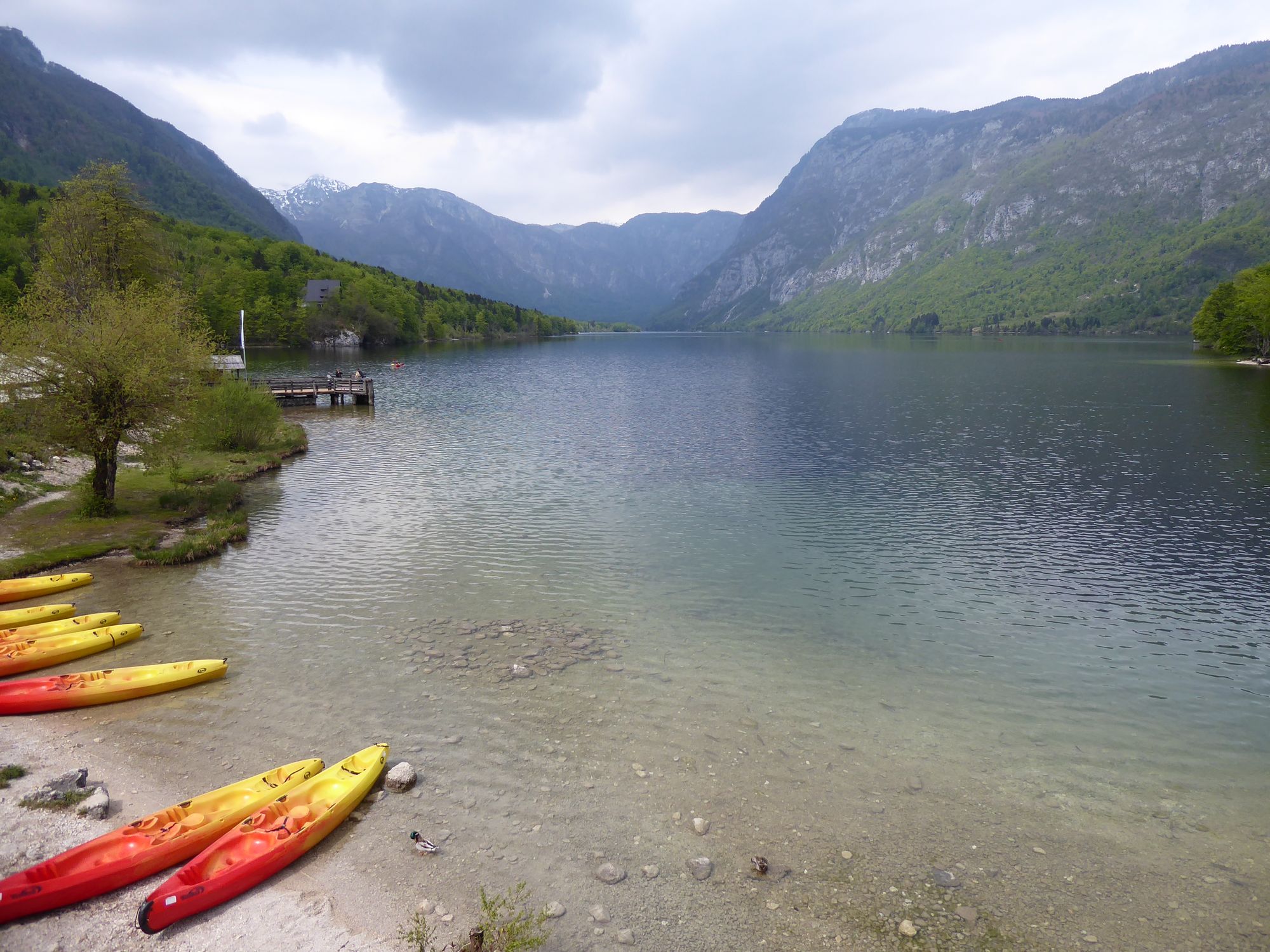
The drive from Bled to Bohinj was lovely, on a quiet single-carriageway road that wound its way through little villages and meadows, skirting the banks of a blue-green river. The sky was a steely grey, with just the occasional ray of sunshine breaking through, and there was barely another car on the road. The lake itself was much bigger than Lake Bled, but with the same incredibly clear water, framed by crumpled grey mountains.
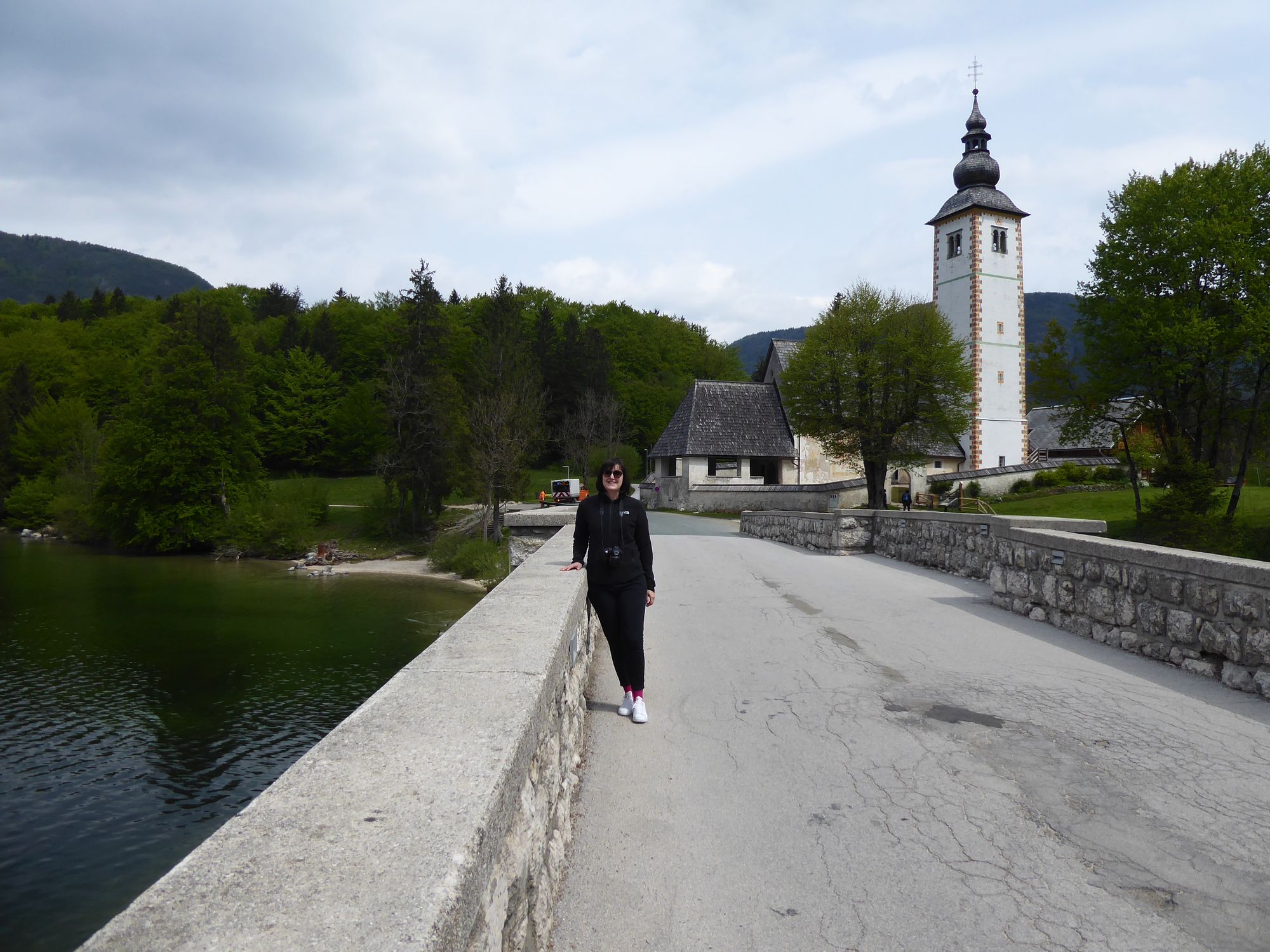
We parked in the little village of Ribčev Laz, near the picturesque stone bridge at the eastern end of the lake. Next to the bridge is the church of St John the Baptist, which dates back more than 700 years and contains some of the oldest frescoes in Slovenia. The church also contains a copy of the 14th-century wooden head of John the Baptist, one of only six such artefacts in the world.

One of the reasons why Lake Bohinj is so tranquil and unspoilt is that there is only one way in or out, with the north, west and south of the lake walled off by the soaring peaks of Triglav National Park. We got a clearer overview of the topography when we took the cable car up to the Vogel Ski Resort, which overlooks the lake from a lofty 1,500 metres above sea level.
As the cable car whisked us up the mountain our ears popped, and we began to spot patches of snow in the nooks and crannies that the spring sun was yet to reach. We weren't here to ski, instead planning to explore some of the resort's hiking trails, and we weren't quite prepared for the sight that met us at the top. Slovenia had been hit by some unseasonably late winter weather, and the resort was still deep in snow, with the temperature hovering just above freezing.
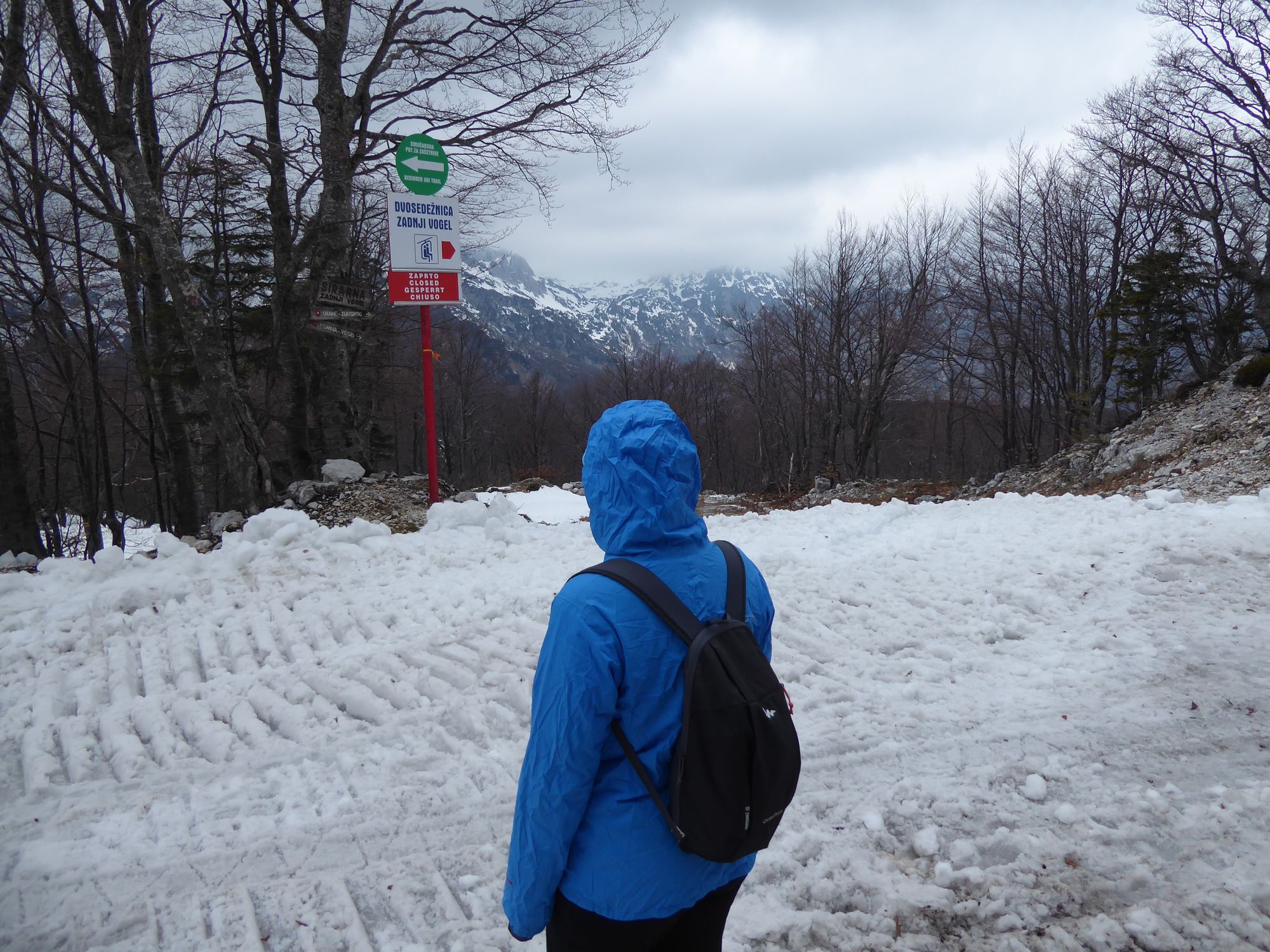
After a warming lunch of goulash and strudel we donned our jackets and attempted to head out on a hike. We had arrived woefully unprepared for the wintry conditions, and found ourselves tentatively shuffling along a slippery, snowy path amongst deserted log cabins and motionless chairlifts, buffeted by an icy wind. The scenery was stunning, a winter wonderland in the middle of May, but it soon became clear that we would have to cut our hike short and head back to the relative warmth of the snow-free valley down below.
Vintgar Gorge
The route from Bohinj back to Bled took us through tiny villages, past rustic farm buildings weathered grey, great piles of firewood stacked up outside. We took abortive shortcuts down gravel tracks and through boggy mud, running into the aforementioned road closure, before eventually threading our way back through the countryside.
Just to the north of Bled is the Vintgar Gorge, a popular tourist attraction that's well worth the detour. One of the remarkable things about Slovenia's alpine region is the incredibly clear water that gushes down from the mountains, feeding rivers and streams that glow with a vivid turquoise hue more reminiscent of the Caribbean or the Seychelles than Central Europe. The colour is due to tiny particles of bedrock suspended in the water, and it was unlike anything I'd ever seen. The Radovna river, which gushes through the Vintgar Gorge, was just one of many such spectacular rivers that we saw during our fortnight in Slovenia.
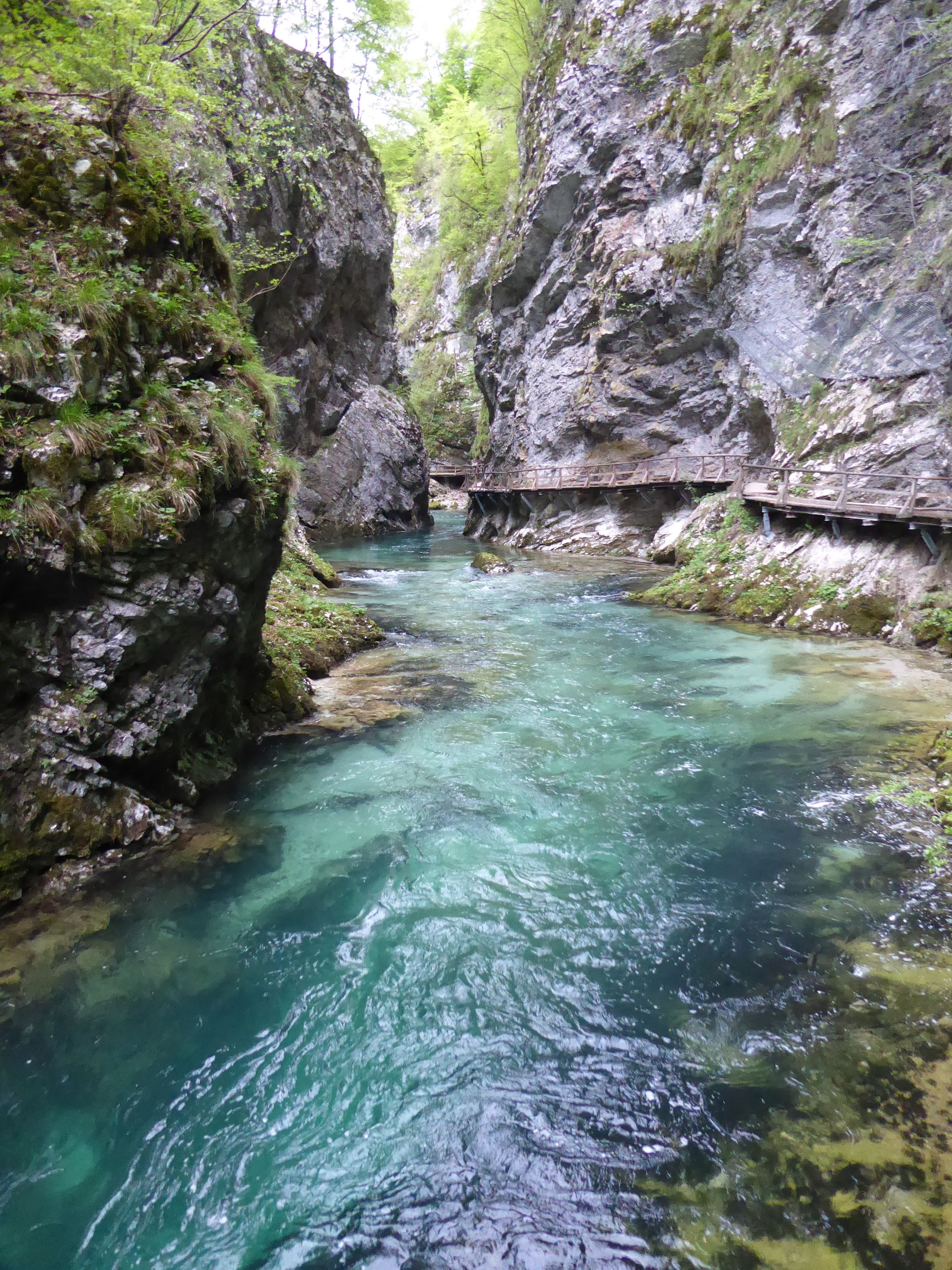
The river is criss-crossed by bridges and walkways, allowing you to peer down into the roiling water. At certain points the river flows through rapids or cascades down waterfalls, sending a curtain of spray up into the air, and the moist, rocky sides of the gorge are a haven for mosses, ferns and wildflowers. We saw little birds with yellow feathers and long tails darting across the water catching insects, and the occasional trout lurking beneath the surface.
We'd only been in Slovenia three days, but already we were entranced by the incredible natural beauty of this tiny country wedged between the Alps and the Adriatic.

